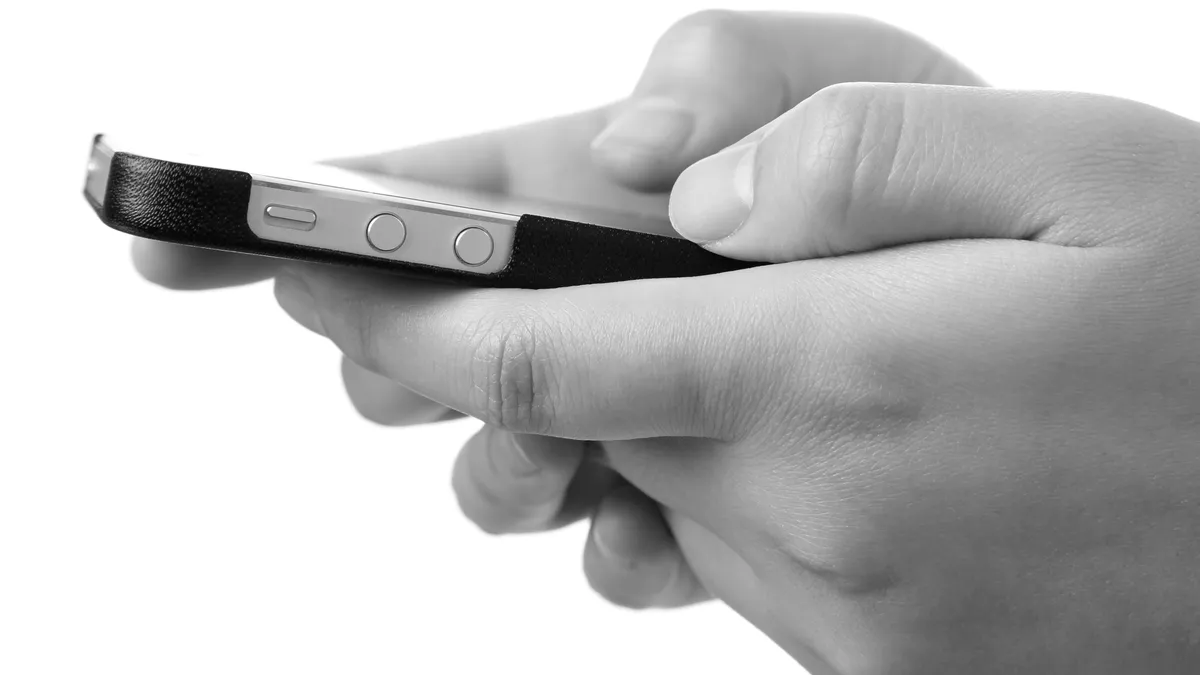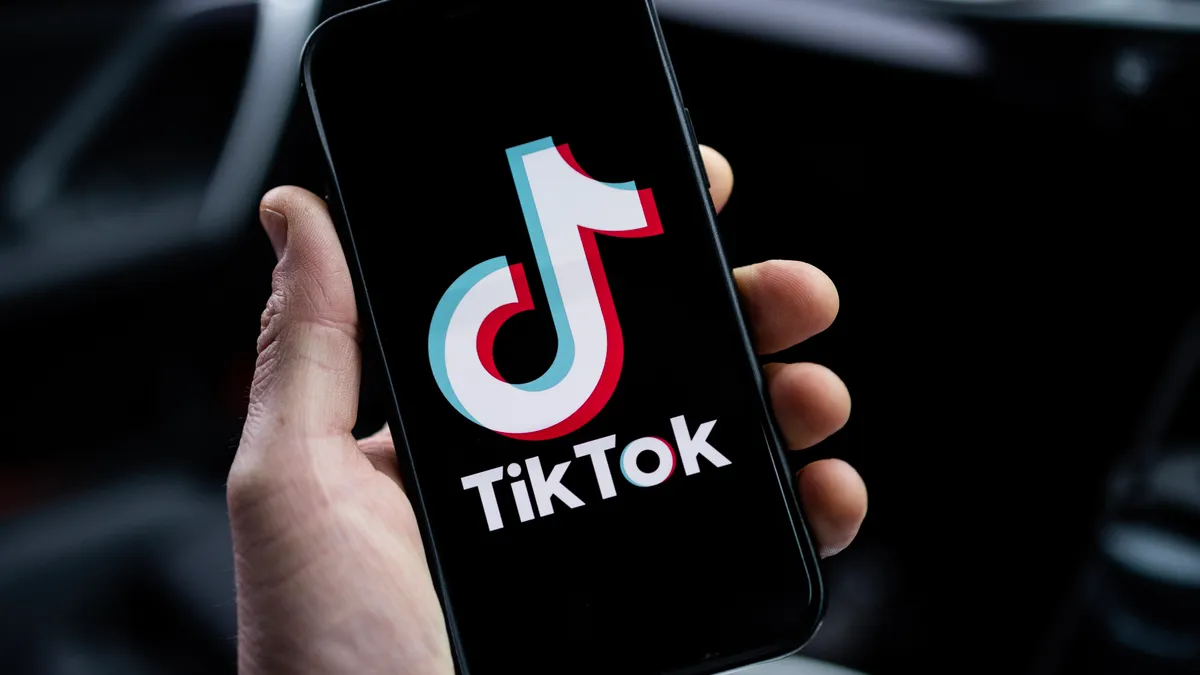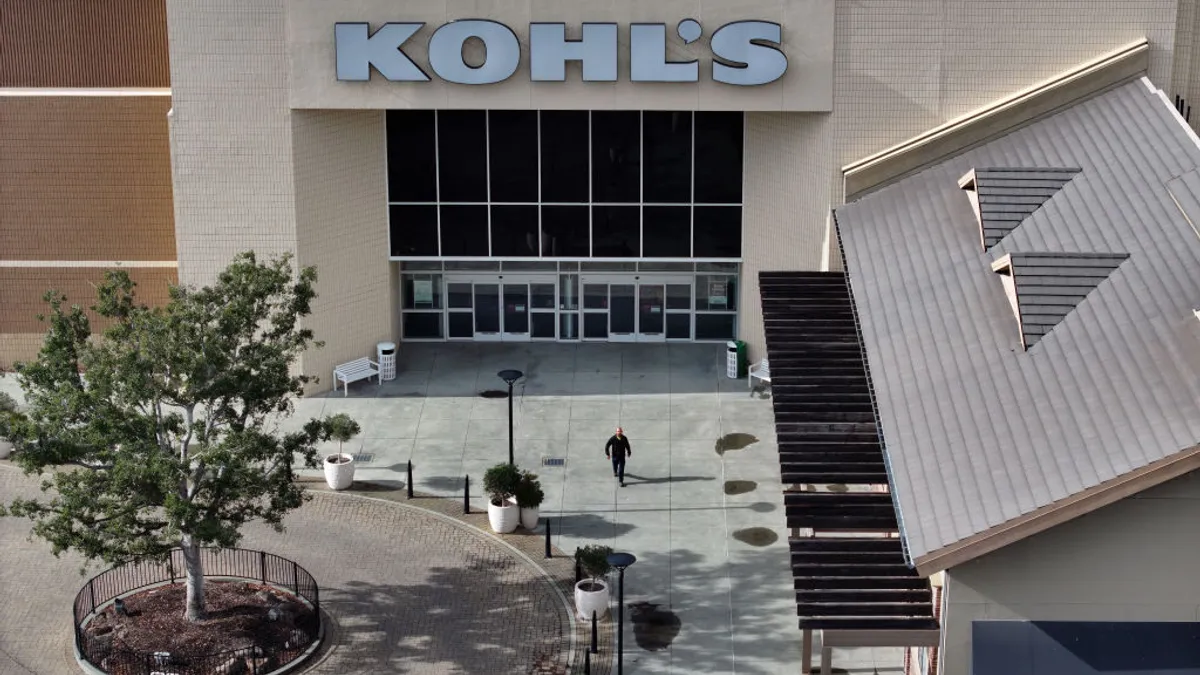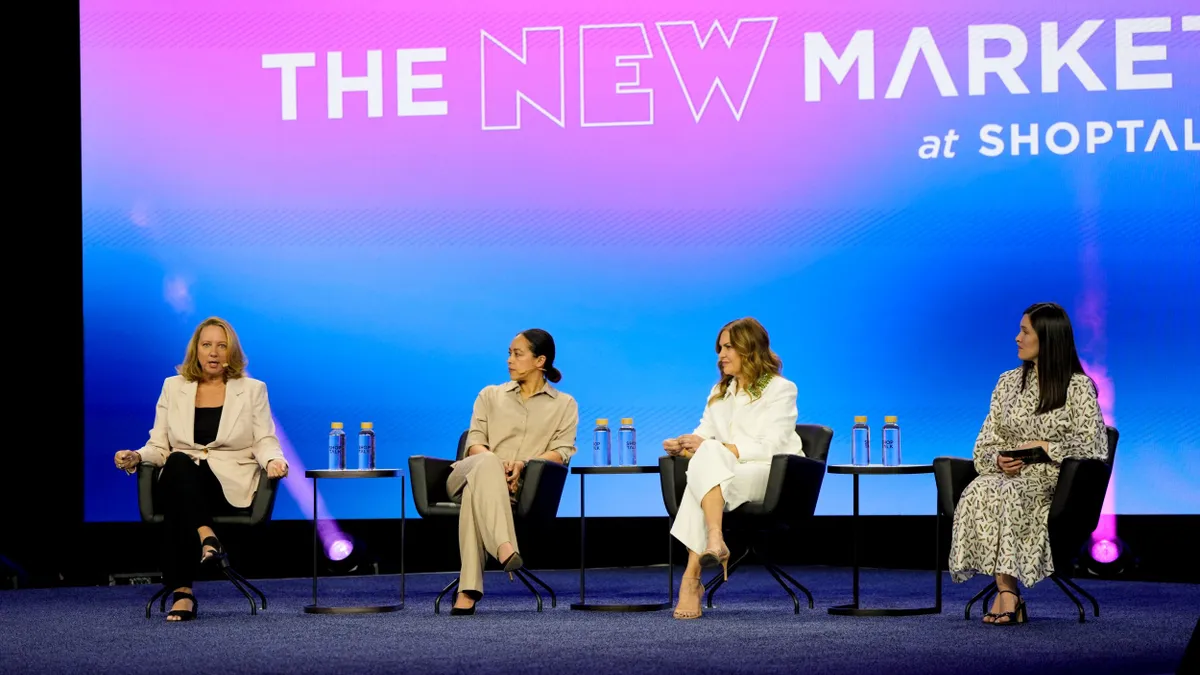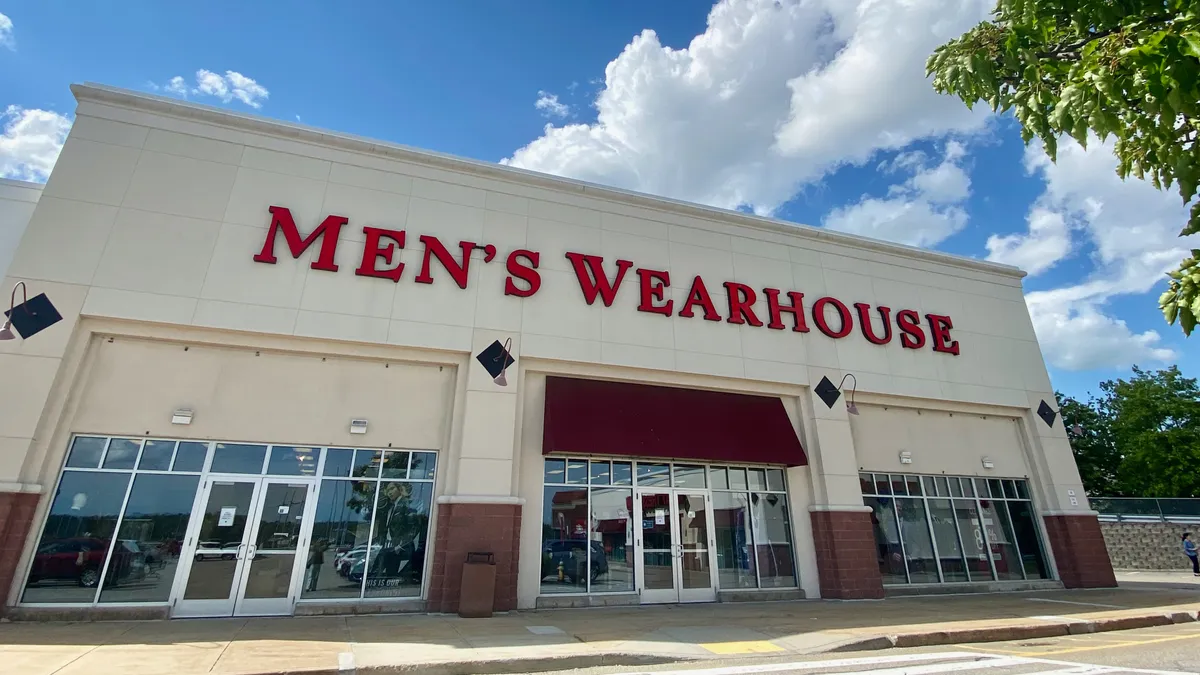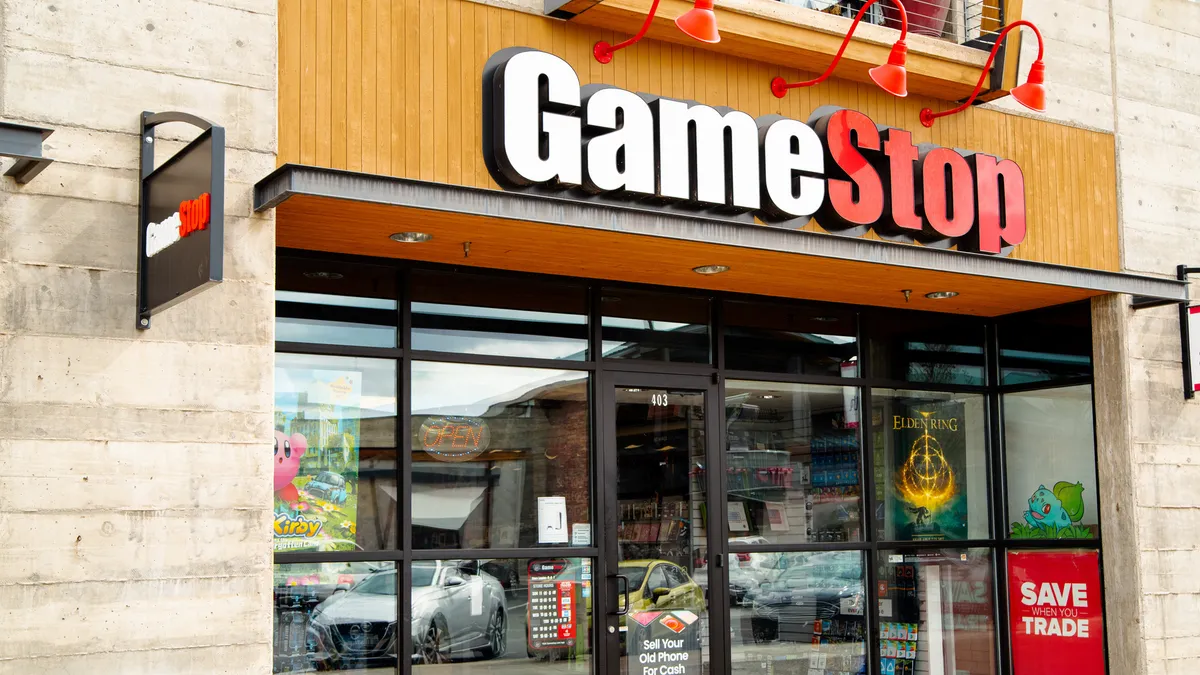Even with a ballooning number of native apps, the mobile web still provides a critical route into the purchase funnel. Usually reached through search or chosen instead of downloading a dedicated app, mobile sites are where retailers often attract initial interest—and they’re getting more sophisticated as more people shift their browsing to mobile.
“The mobile web is kind of a catch-all for the casual user,” Stephanie Trunzo, chief operating officer of PointSource, which helps retail brands such as Finish Line, and H.H. Gregg articulate, develop and execute effective mobile strategies, told Retail Dive. “The mobile web is table stakes today.”
According to the results of Internet Retailer’s 2015 Mobile Mystery Shopping Index, American Eagle Outfitters and Coach tied for first place in delivering a superior mobile commerce user experience. Making up the rest of the top 10, in order, were QVC, Men’s Warehouse, The North Face, Office Depot, Victoria’s Secret, Tory Burch, Neiman Marcus, and Steve Madden.
Tougher now than it was prior to "Mobilegeddon," the day in May 2015 when Google adjusted its algorithm to favor mobile-friendly sites, the index assessed retail sites on more than speed and ease-of-use. This includes advanced functions such as the ability to connect to physical stores, quality of home and category pages, product search and research tools, mobile buying and checkout, and customer service. Speed is still a consideration, of course: Nearly half of smartphone and tablet users (47%) say they would shop elsewhere if a seller’s mobile site or app fails to load in three seconds or less, according to Harris and Dynatrace.
So while a mobile site that loads may be the most fundamental requirement for retailers today, a "good" mobile user experience is what it's going to take for retailers to encourage sales and conversions going forward. What does that experience look like, and what does it deliver?
Designing for mobile
Designing a mobile user experience is a challenge, for the obvious reason that a smartphone’s canvas is limited. The best mobile sites offer a simple design, straightforward checkout procedures, easily tappable buttons, legible fonts, big pictures and—above all—a limited number of choices.
“The key idea behind creating the optimal user expereince—whether an app or mobile web—is to serve the requirements of target customers,” Kendra Cook, senior mobile business analyst at Moovweb, which optimizes sites for Forever 21, Petco, and other retailers, told Retail Dive. “In order to do so, companies should cut the features and functionalities to only what’s needed. Too much text, unclear calls-to-action, unclear error messaging, or ineffective error handling can lead to poor user experiences.”
Cook recommends advanced input functions that include pop-up, numeric-only keyboards when requiring telephone and credit card information, as well as enhanced auto-fill functions. For example, a mobile site should be able to fill in city and state once the user enters a ZIP code without additional touchstrokes. “Every tap you save a user provides an even better experience,” she said.
Looking ahead, new input methods may be able to further aid user-friendliness. Swiping left or right has transitioned to retail sites such as Macy’s from the dating app Tinder, which first brought the function to market as a thumbs-down/thumbs-up, respectively, on specific personal profiles. Apple’s 3D Touch, which uses click pressure to discern user intent on the Apple Watch, may also be useful in mobile design.
Perhaps the worst possible mistake is to forego engineering the mobile experience at all and instead ask users to "pinch and expand": to magnify a site originally designed for larger desktop screens and rendered microscopic by mobile. “Design any new app or mobile website for the phone’s real estate first,” Trunzo advised. “Solve the toughest problem before moving to a tablet or desktop.”
Personalized content ahead
Users expect more from their smartphones every day, but even a clean design and clear instructions may not deliver the optimum mobile experience for much longer. The next step for the mobile user experience is to deliver personalized content and offers—and it can only do that if it can tell who the person is.
“You have to be able to recognize who the person is on the mobile web,” said Dan Buckstaff, vice president of Jetlore. “You can only give them a standard, generic experience if you don’t.”
Retailers need to capture what brought customers to the mobile site in order to deliver a better experience across channels, Buckstaff said, deliver content that's tailored their needs and wants, and know that it can and will ultimately contribute to a sale or conversion.
For example, Wine.com figured out that users often go directly to a product page to find a review of a particular vintage, and have a high likelihood of returning later to order another bottle.
“Wine.com figured out that people who look for information on wines are more likely to become customers.” Buckstaff said. “That’s what we think of as relationship-building in m-commerce, and the mobile web really enables this.”
Consumers have their noses buried in their phones, he noted. “That’s where you want to be with good messaging and content,” Buckstaff said. “The mobile sites that emerge as delivering a good user experience are the ones that drive engagement and know that later on, it will drive purchases.”
Mobile web mimics apps
The experts agree that the best mobile user experiences offer features that address consumers’ most immediate needs, such as a store locator that’s informed by geo-positioning. For example, the Fairmont Hotels chain customizes online content by offering features such as the local weather and dining options based on the user’s interests and location.
Many personalization features are available on native apps, of course, but an app’s share-of-phone can still be a problem, with most consumers using only a handful of apps, and even then using mostly umbrella apps such as Facebook and Google. For retailers, the mobile web can fill the space between casual shopper and diehard brand fan with similar options.
“FlipKart Lite is pushing the technical boundaries of what a mobile website can do,” Cook said, by bringing native-style features to the broader web. “It tries to provide an app-like experience inside a mobile page.”
The top-rated user experience from American Eagle offers a mobile-forward “Reserve, Try, Buy” function that pushes mobile web surfers to stores. World Market—which has an interest in ensuring online shoppers can make an assessment of how a piece of furniture might fit within a space—houses an repository of user-contributed content. And Finish Line offers a dual strategy, in which most shoppers use the mobile web and true sneakerheads download the app.
In the best-case scenario, a favorable mobile user experience will serve as the gateway not only to a sale, but also another platform. “If you really want to be thinking forward, there should be paths [on the mobile user experience] for social sharing and integration with social commerce,” Trunzo said. “Will it take me to Instagram, where anything tagged pushes to me download the app?”


